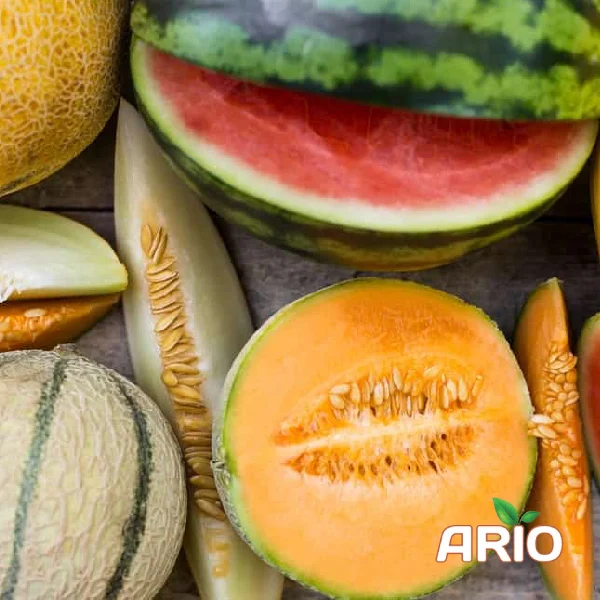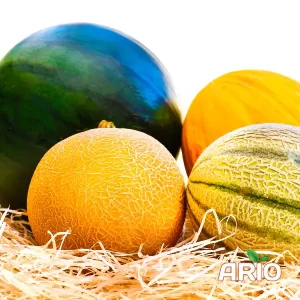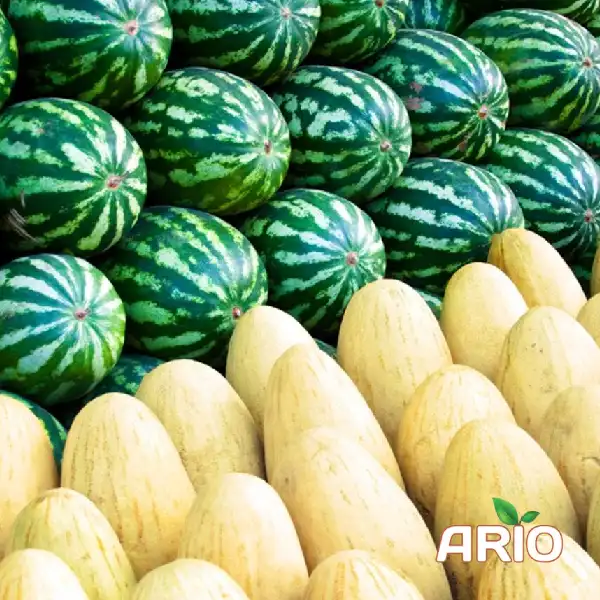
Melons
Melons and watermelons, iconic summer fruits known for their sweetness and hydration properties, play a crucial role in Iran’s agricultural economy. Beyond their popularity in domestic markets, these fruits are also prominent in the country’s export portfolio. This article provides an in-depth overview of melon and watermelon production in Iran, export destinations, pricing trends, and future growth prospects—tailored for producers, exporters, and international buyers alike.
Melon and Watermelon: Cornerstones of Iran’s Fruit Export Industry
Cultivation in Iran: Regional Insights for Melons and Watermelons
Iran’s diverse climatic zones offer ideal conditions for cultivating a wide range of melons and watermelons across numerous provinces. Key production areas include Chabahar, Shiraz, Dezfoul, Jiroft, Boushehr, Khorasan Razavi, Bandar Anzali, and Ghazvin.
While watermelons are often grown in warmer southern regions, melons—ranging from cantaloupes to Persian varieties—are also widely cultivated in semi-arid and temperate areas. These regions produce fruits with distinct sugar content, texture, and shelf life, catering to both local consumption and export requirements.

Melon and Watermelon Export Dynamics: Global Reach and Trade Volumes
Iran ranks among the leading exporters of both watermelons and melons. In recent years, watermelon exports have surpassed 100 million metric tons annually, while melon exports continue to grow steadily. Major destinations include Iraq, Kuwait, Bahrain, Romania, Azerbaijan, Germany, Russia, and Kyrgyzstan.
The fruits’ natural sweetness, aroma, and competitive pricing have made them attractive commodities in global markets.
Melon and Watermelon Market Trends and Pricing
Iranian watermelons and melons are competitively priced in international markets.
Wholesale prices for watermelons range between US$ 0.51 and US$ 1.54 per kilogram, while melons typically range from US$ 0.65 to US$ 1.80 per kilogram depending on variety and quality. Retail prices are generally higher, influenced by factors such as fruit size, packaging, and seasonal demand.
Steady international demand sustains strong interest from wholesalers and distributors across various regions.
Quality Standards and Certifications ofMelon and Watermelon
To access international markets, Iranian producers and exporters adhere to stringent quality assurance measures.
Both watermelon and melon shipments are certified under internationally recognized standards such as BRC, IFS, ISO 22000, KOSHER, HALAL, NOP, and EU-Organic. These certifications ensure food safety, traceability, and compliance with importing countries’ regulatory frameworks.
Melon and Watermelon Packaging and Logistics
Effective packaging is essential for maintaining the freshness and integrity of both melons and watermelons during transit. Exported fruits are typically packed in ventilated cardboard or plastic containers that prevent physical damage and promote airflow.
Packaging configurations may vary based on the type of melon, target market requirements, and shipping duration. Cold-chain logistics are employed for premium-grade varieties to extend shelf life.

Challenges and Opportunities of Melon and Watermelon
Despite a robust market position, the Iranian melon and watermelon export industry faces key challenges. Limited water resources and increasing competition from other exporting nations such as Turkey and Spain pose ongoing risks.
Nevertheless, significant opportunities exist in diversifying export markets, investing in eco-friendly production methods, and exploring value-added products like melon juice or pre-cut chilled fruit.
Future Outlook of Melon and Watermelon
The global trend toward healthy, natural, and hydrating foods places melons and watermelons in a favorable position. Iran is well-equipped to meet this growing demand through continuous improvements in infrastructure, greater market access, and strategic brand building.
Future growth is expected to be driven by innovation in packaging, expansion into emerging markets in Asia and Africa, and further emphasis on organic farming practices.
Frequently Asked Questions (FAQ)
1. What are the main cultivation regions for melons and watermelons in Iran?
Key regions include Chabahar, Shiraz, Dezfoul, Jiroft, Boushehr, Khorasan Razavi, Bandar Anzali, and Ghazvin.
2. Which countries import Iranian melons and watermelons?
Primary markets include Iraq, Kuwait, Bahrain, Romania, Azerbaijan, Germany, Kyrgyzstan, and Russia.
3. What are the average prices for Iranian melons and watermelons?
Wholesale prices range from US$ 0.51–1.54/kg for watermelons and US$ 0.65–1.80/kg for melons.
4. What certifications are required for exporting these fruits?
Common certifications include BRC, IFS, ISO 22000, KOSHER, HALAL, NOP, and EU-Organic.
5. How are melons and watermelons packaged for export?
They are packed in sturdy, ventilated cardboard or plastic containers to ensure product integrity.
6. What are the key challenges in the melon and watermelon export industry?
Water scarcity and international competition are the primary challenges.


























